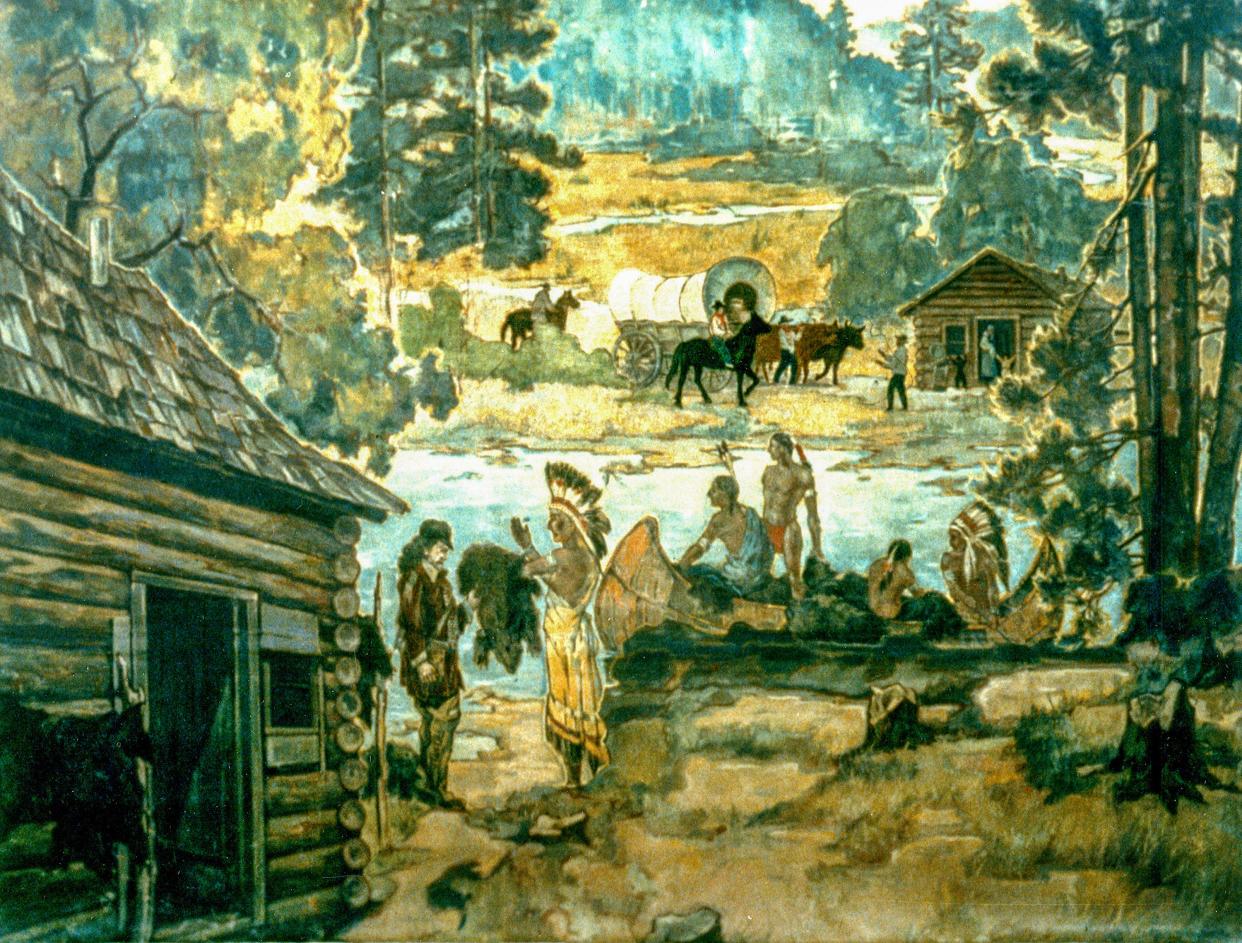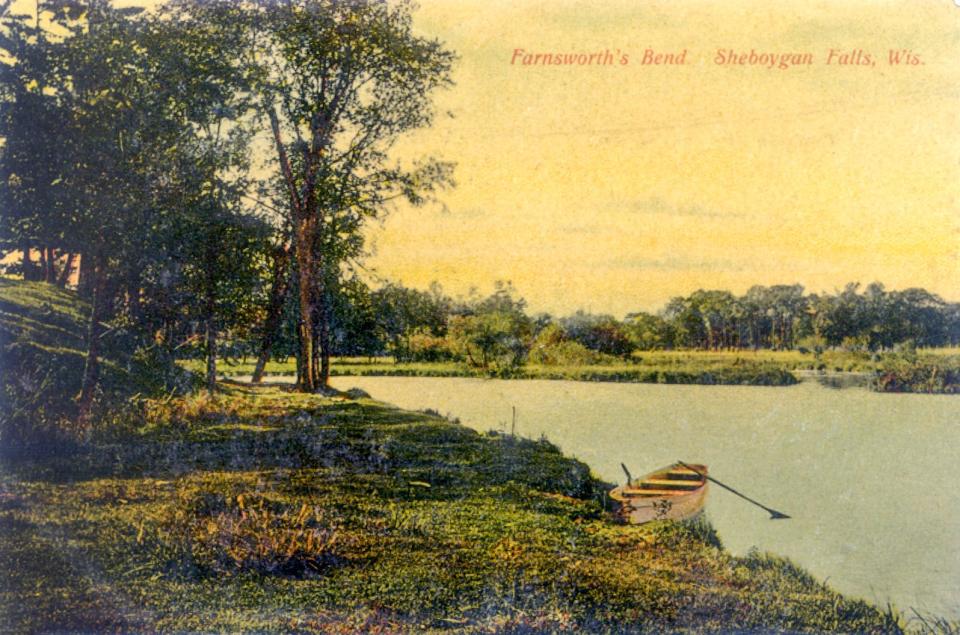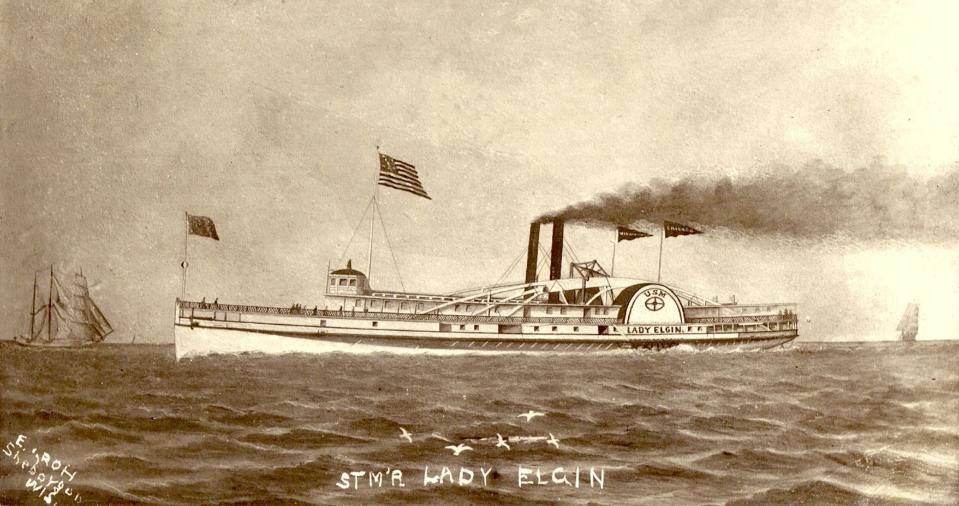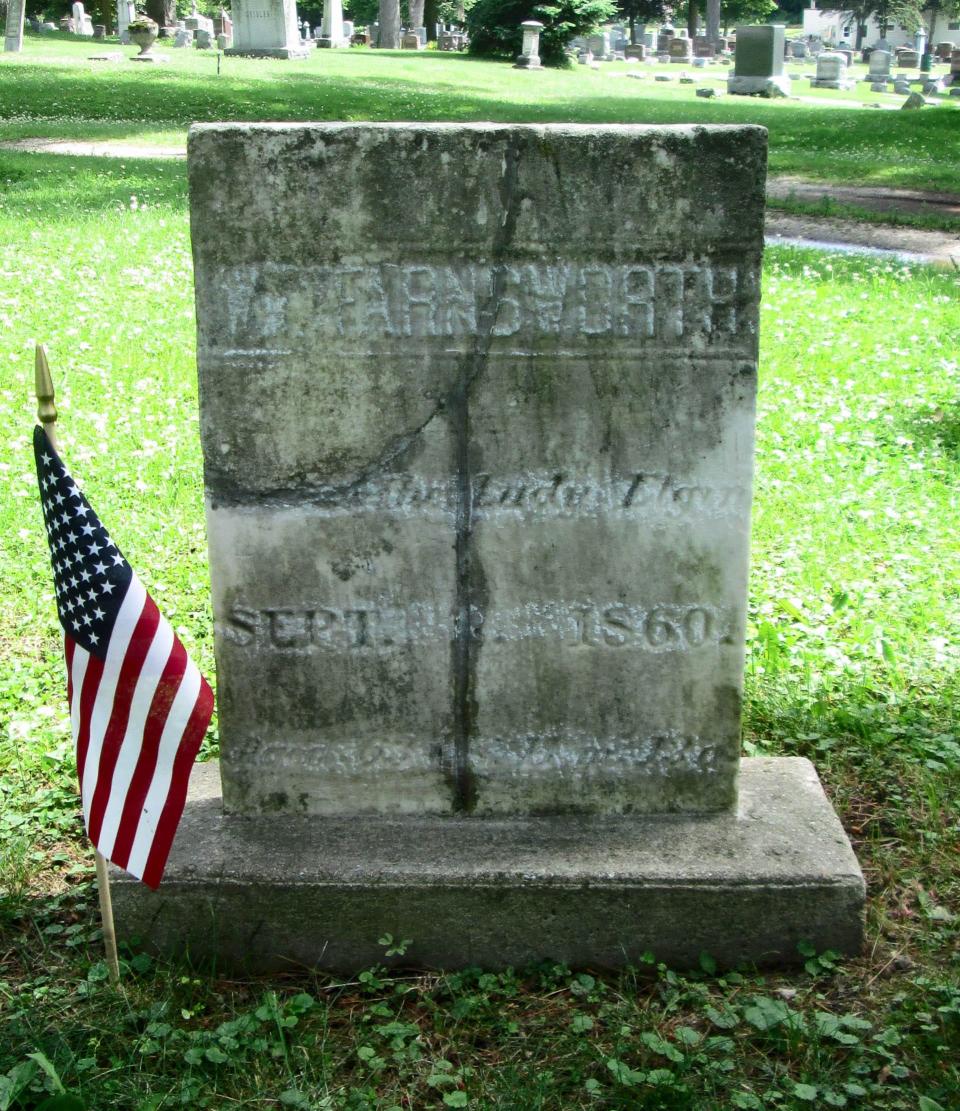Sheboygan's founder was a fur trader who arrived in 1820. Here's how his bravery and real estate deals helped establish the city.

- Oops!Something went wrong.Please try again later.
SHEBOYGAN - Well before the area was to be known for chairs, cheese, children and churches, fur trappers blazed the trail into the uncut wilderness eventually known as Sheboygan County.
In 1795, a fur trading post was built, known as the first white man's establishment, on the Sheboygan River near Sheboygan Falls. That was only 12 years after the close of the Revolutionary War. Back then, the entire Great Lakes region was still an unsubdued wilderness with settlements scattered at wide intervals.
At that time, the fur trading business was almost the sole industry, according to the book "Historic Sheboygan County" by Gustave W. Buchen. The book was provided by the Sheboygan County Historical Research Center.
Jacques Vieau was sent out by the American Fur Company to establish a chain of fur trading posts on the west shore of Lake Michigan. Vieau erected posts at Kewaunee, Manitowoc, Sheboygan and Milwaukee.
In 1818, William Farnsworth, who would become known as the founder of Sheboygan, would sign on with the American Fur Company as a clerk for a term of five years with a salary of $220 per year. He would work out of a trading post near Sheboygan Falls.
He was described as a man of medium height and wearing a full beard. He was said to be pleasant, active and industrious, along with being popular.
A drawing that for many years was thought to be of Farnsworth, after much research, was determined to be that of his son, George P., according to Katie Dippel of the SCHRC. No image of Farnsworth apparently exists.
Farnsworth, who was born in Vermont in 1796, spent much of his early years in Montreal, Canada, which was a major fur trading center.
Only a few months later, in July 1818, Farnsworth was discharged because of his independent nature and was at odds with the management style of the fur company.
He then struck out on his own after that in 1820, setting up camp at what is today known as Sheboygan Falls, competing directly nearby his former giant employer.
The American Fur Company was financed by the deep pockets of John Jacob Astor, who was America's first multi-millionaire. The Astor name would make news in 1912 when his grandson John Jacob Astor, IV would perish on the Titanic.
Native Americans made it challenging for Farnsworth upon his arrival, as a large delegation of headmen of the Menominee tribe called on Farnsworth at his cabin, where they told him he must quit their country at once, otherwise they would seize his goods. They warned him that resistance would cost him his life.
With 15 to 20 Native Americans surrounding him demanding that he leave, Farnsworth seized a keg of gunpowder he had on hand and inserted a stump of a burning candle in the hole on the top. He then informed them in a calm, but firm, voice that he knew they were braves, but that he was a brave of the white men. He said that if his property and life were to be sacrificed, they must all suffer the same fate, as no truly brave man would ever fear death.
Nothing further was said, but as the candle gradually burned dangerously low, one after another of the Native Americans would leave. After the last one left, Farnsworth quickly extinguished the candle and breathed a sigh of relief.
This incident enhanced Farnsworth's prestige to the tribesmen, making them his devoted friends and admirers. He would continue his trading for many more years.

In another instance, Farnsworth was accused by the American Fur Company of supplying Native Americans with whiskey, which was deemed illegal by governmental edict. That rule was routinely violated, as it was almost impossible to trade without exchanging whiskey for furs.
Investigating officers came to his cabin and Farnsworth invited the officers to conduct a search. He did admit he kept a little bit of good brandy on hand for himself and friends, but declared he never sold any to the Native Americans.
It was thought that his former employer wanted to accuse him of something to put him out of business. He then invited the officer and his men to have a drink with him after completing their searches. After an overnight at his cabin, the officers and his men left on good terms with Farnsworth, having no idea that he had four or five barrels of whiskey buried secretly close to his home.
Farnsworth would split his time between Marinette and Sheboygan with his fur trade, finally moving to the area for good in 1833. He would then establish a lumber and real estate business.
He married half-Menominee Marinette Chevalier (Queen Marinette), who enhanced many of his business operations. During the winter of 1831-1832, in partnership with Charles R. Brush of Detroit, he built the first sawmill on the Menominee River.
Queen Marinette, as she was known, would later divorce Farnsworth. Farnsworth would marry twice more before his death. Some time after the divorce, he married Lydia Anne, the widow of his cousin, James Farnsworth, who lived in Sheboygan.
After his arrival in 1833, he built the first sawmill on the Sheboygan River, having done the same on the Menominee River.
With his real estate efforts, he managed to buy a large plot of land to create a township. That township would eventually become Sheboygan. The tract of land was estimated to be about 1,025 acres. The exact details of the original plot layout have been lost to the passage of time.
In 1836, Farnsworth would sell his half interest in the plot for $30,000 to New York & Erie Transportation Co., and another one-sixteenth of which he disposed of for $25,000. Today the values of these transactions are worth roughly $1,778,451, according to the CPI inflation calculator.
Those initial plans made it possible so that by 1841 some 200 lots were sold, upon which 17 buildings were erected.
Sheboygan itself would become a city in 1853. Farnsworth is credited with helping establish Sheboygan with his real estate deals.

Farnsworth perished in the sinking of the ill-fated steamer Lady Elgin on Sept. 8, 1860, when the boat was rammed during a storm by the schooner Augusta off Point Winnetka about 16 miles north of Chicago. He was 63 years old.

According to newspaper accounts of the time, his remains were followed to the grave by one of the largest processions seen in the city. Obsequies were conducted by the Free Masons of Sheboygan and Sheboygan Falls who marched to the cemetery followed by the German Rifle Company and Protection Fire Company No. 1, both in uniform with long lines of carriages filled with citizens. He was survived by his third wife, whose name is unknown, his son George P. and a step-daughter. His body lies in Wildwood Cemetery in Sheboygan.
RELATED - Sheboygan Falls' Rochester Inn served as a temperance hall, a factory and gathering place
RELATED - Holocaust survivor Fela Warschau was almost chosen for Dr. Mengele's experiments at Auschwitz
RELATED - The Sheboygan Theater, saved by an arts foundation is now known as the Weill Center
This article originally appeared on Sheboygan Press: William Farnsworth: Vermont born fur trader who founded Sheboygan

